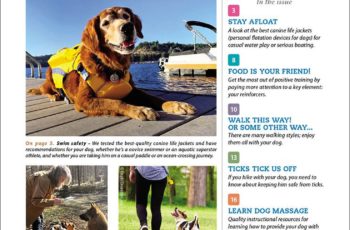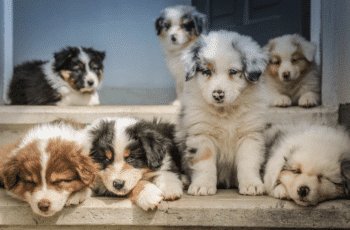Overheated dogs become dehydrated, restless, and unresponsive as they attempt to cool themselves by panting. Heat stroke symptoms can include drooling, vomiting, diarrhea, a racing heart, and physical collapse. Overweight or obese dogs, long-haired dogs, dogs with dark or heavy coats, brachycephalic breeds, and dogs with laryngeal paralysis are at a higher than average risk of heat stroke.
Brachycephalic (short-nosed or flat-faced) dogs such as Pugs, Boston Terriers, Boxers, French Bulldogs, and English Bulldogs have narrow nostrils and smaller airways than other dogs, and this predisposes them to heatstroke because they cannot pant sufficiently to cool themselves. They often make abnormal snorting sounds while panting because of a long soft palate or excessive tissue in the throat that obstructs the airway. It’s even more important to keep these dogs cool and listen for changes in their panting and breathing patterns.
If you think your dog is overheating, don’t just offer water to drink. If a tub or stream is available, you can submerge your dog in cool (not cold) water. Applying cool, wet towels to his chest, neck, head, groin, and feet, and continually replacing or re-wetting the towels (because they warm up quickly) is the next-best method of cooling him. Pouring water over his body using a watering can or bowl isn’t much help; it won’t get the cooling water on his skin (especially on his groin and tummy). You can use an outdoor hose, but check to make sure the water’s temperature is cool, rather than hot from sun exposure or uncomfortably cold. Keep your dog in the shade and out of direct sunlight; if you’re indoors or in your car, run the air conditioner, and/or use a portable battery-powered fan to increase airflow.
Heat stroke can be fatal. If your dog shows any symptoms of heat stroke, contact your vet or emergency clinic at once. For more information, see “Avoiding Heat Stroke in Dogs,” July 2019.


